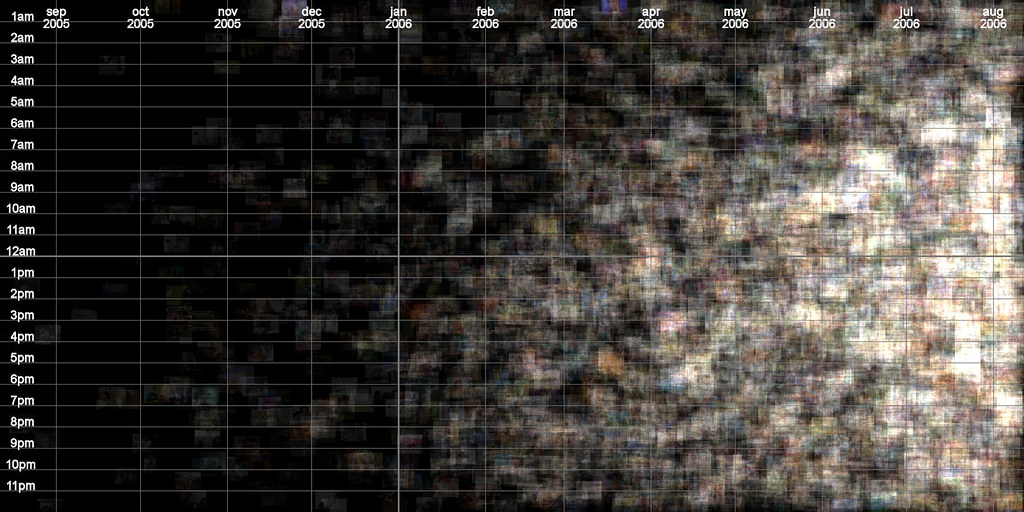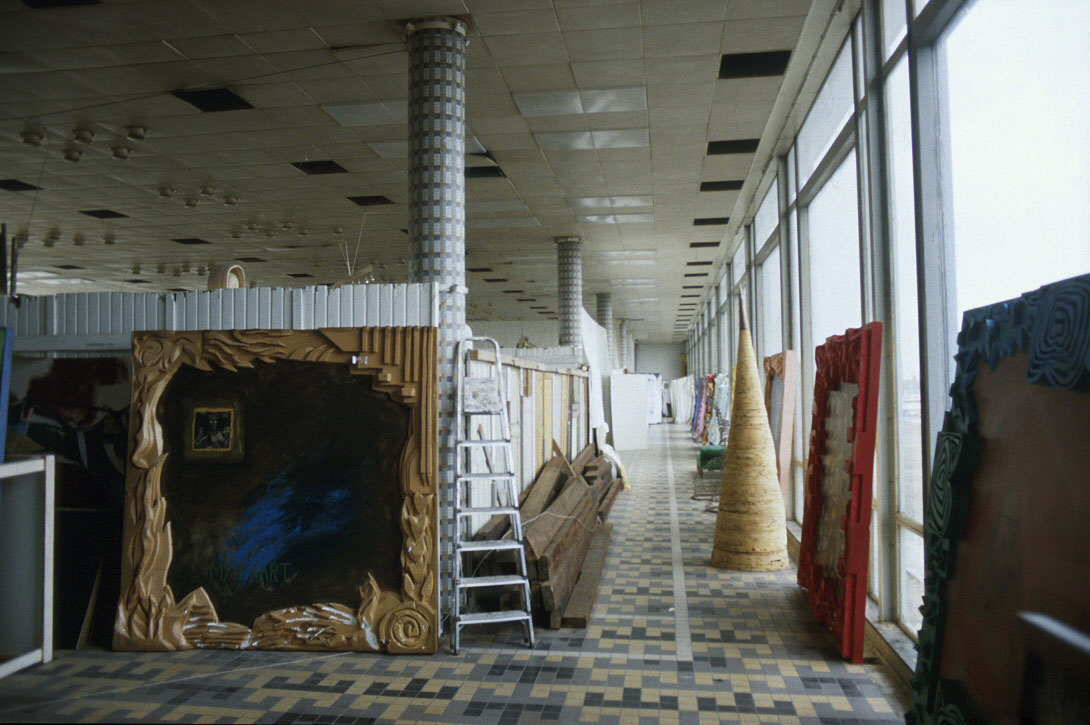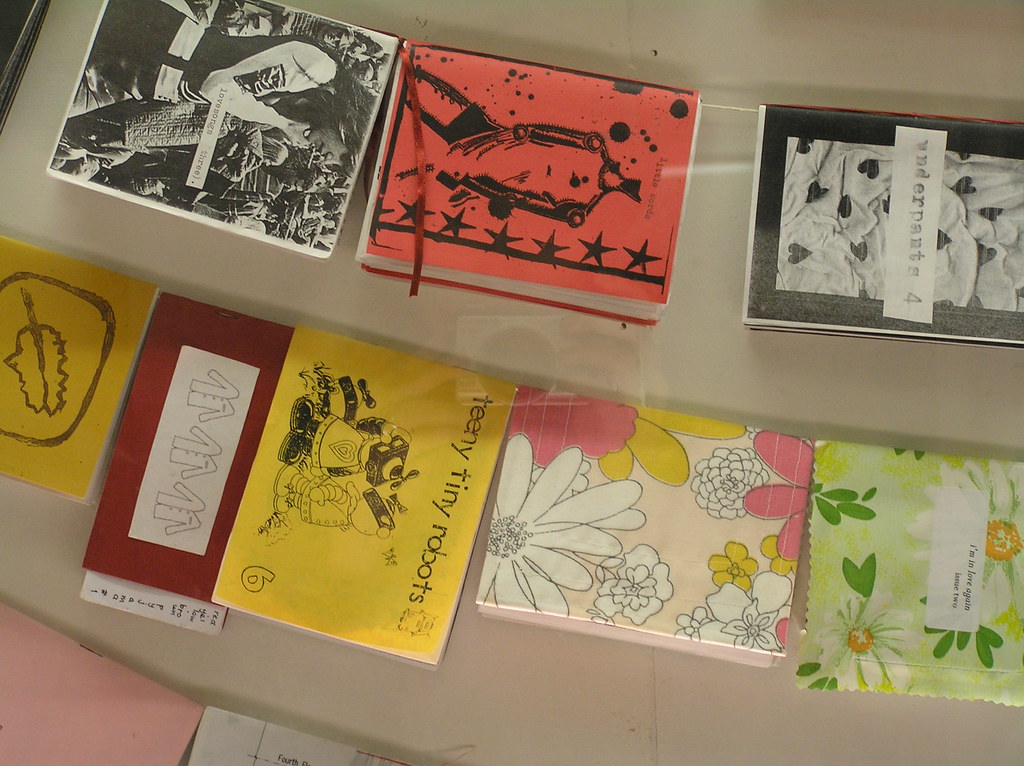Can a collaborative research paper still sound cohesive if there are multiple voices/narrators? If so, how? Can we each write our own sections? Or should there be one designated writer? Or should we all sit down and write it together?
-the squatting group
Wednesday, August 13, 2008
Wednesday, May 21, 2008
Theory, meet Action: public scholarship
I'm really glad we had to read this. I feel like it brings up an important aspect that I've noticed, but never considered the disconnect as so-called public scholarship. Being outside the academic realm of social science and humanities, this class has put me in contact with scholarly work that largely isn't accessible. As a student, I struggle through these, but I still feel, and totally am, outside these scholarly realms.
The Domke and Ellison public scholarship pieces connected with me far more than most of the others, and this is really what public scholarship is about-- putting knowledge and ideas into the hands of those outside of the scholarly realms in which the writers traffic; bridging the disconnect between the thinking within the scholarly realms and those that this knowledge can influence.
Without much knowledge of scholarly works and the conversations that are contained within certain fields, I simply do not feel comfortable and don't believe I can, write exclusively within a scholarly context. The accessibility that public scholarship strives for is something I take dearly. Regarding my own project, I'm not sure how to make my work accessible other than the way I write it/blog it/use video. Perhaps the way the writing is published-- not a book, because of the scope of that task, but perhaps something more diy-- like a zine? Just because it's photocopied and stapled together doesn't mean it's not valid knowledge. I wonder how amused the squatters will be if I hand them a zine documenting what I think of them/their stuff/artifacts.
The Domke and Ellison public scholarship pieces connected with me far more than most of the others, and this is really what public scholarship is about-- putting knowledge and ideas into the hands of those outside of the scholarly realms in which the writers traffic; bridging the disconnect between the thinking within the scholarly realms and those that this knowledge can influence.
Without much knowledge of scholarly works and the conversations that are contained within certain fields, I simply do not feel comfortable and don't believe I can, write exclusively within a scholarly context. The accessibility that public scholarship strives for is something I take dearly. Regarding my own project, I'm not sure how to make my work accessible other than the way I write it/blog it/use video. Perhaps the way the writing is published-- not a book, because of the scope of that task, but perhaps something more diy-- like a zine? Just because it's photocopied and stapled together doesn't mean it's not valid knowledge. I wonder how amused the squatters will be if I hand them a zine documenting what I think of them/their stuff/artifacts.
Photo credit: Moira Clunie
Monday, May 19, 2008
the casual everyday: read me
Part 1
She’s wearing a pair of cropped pants, and a tank top. The pants are a solid color: chocolate brown. No hint of the plaid that was everywhere last year, and maybe peeping back again this summer. Her spaghetti strap tank top allows view of her black bra straps. The tanktop itself is a solid green, with an image of the front-side (her right side.) The image is black text of some sort, framing “white space” that forms the shape of a mushroom. Another thin black line is located approximately in the middle of the tanktop, not really part of the image in the corner…an accident caused by a Sharpie or printing mistake? On her shoulders, draped haphazardly is a thin black zip-up hoodie, solid color and nondescript. The use of layers suggests she is prepared to be comfortable in the changing temperatures of the day.
Her feet sports a pair of flipflops. Once again, plain black and nondescript. In contrast, her toenails are painted a dark red. Her right ankle sports a thin silver anklet, a chain with small circular charms dangling from it. She also has a silver chain bracelet on her right hand, and a silver necklace, with a pendent of two silver hoops, echoing the shape of the anklet charms and three silver chains, each of various lengths and ending in a black bead. Her earrings, also in silver, dangle a sphere in midst of a silver spiral. Her left ear also has two other silver loop earrings.
A pair of large sunglasses, as so is the style these days, sit perched upon her head, as she is inside. This, along with the mostly bared limbs hints at the warm and sunny whether outside. However, her long black hair is left down, rather than up. The black band around her left wrist appears to be a hairtie, which suggests she expects pulling her hair up eventually.
Part 2
1) It’s chilly in the morning when I leave the house
2) no short shorts at work
Instead, I settle for the cropped pants, which are conservative enough to wear to the office, but allow me to stay cool in the sun as well. I’m not a huge fan of flashy colors or patterns, so the solid colors of the pants, tanktop, hoodie,and flipflops suits me fine. The tanktop is not something I would usually buy, and indeed, I didn’t buy it. However, it was silkscreened by me (hence the accidental black line) for one of my best friend’s birthday, in which I made matching tanks for several of us. The image is from an inside-joke amongst ourselves, and no we don’t worship shrooms.
The nondescript black hoodie is one of several I own. Over the years, I’ve just collected a lot of black clothes. I wear it today to keep the morning chill out and to cover-up while I’m in the office. The silver jewelry isn’t matching-I don’t generally buy matching sets of things. But like black clothing, I’ve just got quite a bit of silver accessories.
If I get the chance to sneak away from the computer for a few minutes at work, I'll get a picture taken and up. Otherwise, I'll put one up later.
Wednesday, May 14, 2008
approaches
After a while of being caught up in "What is squatting? a subculture or counter-culture or neither" I'm just moving on.
At this point, I'm sticking with "What is the aesthetics of the squatting subculture?" I'll start out with taking squatting as a subculture, and in my conclusion, come back to this framework and address the issue of whether of not my research supports squatting as subculture, or if this is an area of further opportunity.
I was planning to look at traces and environmental behavior, focusing on interior decor. I just found this framework credited to philosopher Marx Wartofsky.
The article I found (the above) from: Díaz-Kommonen, L. et al (2004) Expressive artifacts and artifacts of expression. Working Papers in Art and Design 3. ISSN 1466-4917
This seems like another way of saying (framing?) what I'm trying to do- constructing meanings of what secondary and tertiary artifact, from the primary artifact, says to squatting, (like Ragin's construction of images.) ...Thoughts?
At this point, I'm sticking with "What is the aesthetics of the squatting subculture?" I'll start out with taking squatting as a subculture, and in my conclusion, come back to this framework and address the issue of whether of not my research supports squatting as subculture, or if this is an area of further opportunity.
I was planning to look at traces and environmental behavior, focusing on interior decor. I just found this framework credited to philosopher Marx Wartofsky.
The article I found (the above) from: Díaz-Kommonen, L. et al (2004) Expressive artifacts and artifacts of expression. Working Papers in Art and Design 3. ISSN 1466-4917
This seems like another way of saying (framing?) what I'm trying to do- constructing meanings of what secondary and tertiary artifact, from the primary artifact, says to squatting, (like Ragin's construction of images.) ...Thoughts?
Monday, May 12, 2008
Mieke Bal
In Tradition, Bal claims there is an empowerment that comes from engagement with art, provided it is performative. My question would be how she would understand something like Youtube, which provides a platform for engagement and counter-performativity (ie comments, video responses)
In Telling, Showing, Showing Off, Bal argues that Museums are presented through the lenses of Westernized Society, repressing all others. How does one weigh the pragmatic concerns of serving the audience, while formulating a display that might not be understandable under the ethnocentric viewpoint of the audience?
In Telling, Showing, Showing Off, Bal argues that Museums are presented through the lenses of Westernized Society, repressing all others. How does one weigh the pragmatic concerns of serving the audience, while formulating a display that might not be understandable under the ethnocentric viewpoint of the audience?
Labels:
Mieke Bal,
Showing,
Showing Off,
Telling,
Tradition
Wednesday, May 7, 2008
the form in which content appears

Photo Credit: Jim Bumgardener
On a side note: Just sort of stumbled across the above which documents the rise in activity level on youtube. Check it.
---
The print medium seems so much more traditional, formal, and academic. Thus I probably won't escape doing something along those lines, but at the same time, I would like to also make my research more accessible and appealing to those outside academia- and especially to the people who I am studying. The web, still being relatively new, provides a lot more flexibility. There are fewer rigid conventions and expectations. I find it to be more innovative. I really enjoyed the Web 2.0 video and believe it works a lot better than if a paper was written about the same thing.Since I'm studying aesthetics, which connects to each person on a personal level, I see the web as a better way to communicate and connect with my audience, rather than on paper, which generally is a bit drier. Furthermore, the mere connotations/associations of web seems more reflective of the subculture I am studying.
Monday, May 5, 2008
the interior, the trace

photo credit: David Carr-Smith
"The Interior, The Trace" has some interesting relationships drawn between furnishings and the space in which the furnishings are, as well as the people who dwell in these spaces. The line about movables (the furnishings) developing out of the immovables is an idea I grasped onto since the idea of movables as a response to the immovables is the basis of my question regarding aesthetics of squat culture.
The idea of fashionable furnishings also caught my attention. Selecting certain furnishing is a consumption of culture, but is it also production of culture? Especially in the squat culture, which (not to make claims before I actually do research myself) seems to have a diy philosophy, how is this idea of fashionable, and often functional, items produced by consumption? Also within this convolute was the concept of the dwelling as a receptacle of a person, and this shell bearing the impression of that person. I think this draws parallel with my focus on aesthetics as a reflection of the person (or in cases of squats as public venue, the "sub"culture." As mentioned in the convolute, to dwell is to form such shell... production, perhaps? ...I have yet to get my hands on that de certeau piece I should read.
Lastly, I would like to touch on the emergence of the private home which comes from the dissociation of the proprietor (of factory buildings.) To extrapolate, the aesthetics, and the process behind such aesthetics of a squatted space serves to dissociate the space from the previous use, or disuse, of the squatted space.
The idea of fashionable furnishings also caught my attention. Selecting certain furnishing is a consumption of culture, but is it also production of culture? Especially in the squat culture, which (not to make claims before I actually do research myself) seems to have a diy philosophy, how is this idea of fashionable, and often functional, items produced by consumption? Also within this convolute was the concept of the dwelling as a receptacle of a person, and this shell bearing the impression of that person. I think this draws parallel with my focus on aesthetics as a reflection of the person (or in cases of squats as public venue, the "sub"culture." As mentioned in the convolute, to dwell is to form such shell... production, perhaps? ...I have yet to get my hands on that de certeau piece I should read.
Lastly, I would like to touch on the emergence of the private home which comes from the dissociation of the proprietor (of factory buildings.) To extrapolate, the aesthetics, and the process behind such aesthetics of a squatted space serves to dissociate the space from the previous use, or disuse, of the squatted space.
-1-
The surprising opportunities and demands of the industrial sites challenge domestic conceptions and force their users to invent expedients unrestricted by mass-taste, ready-made products, or design-training. The results demonstrate a mode of design rare in our culture: a kind of accretive forming of an individual’s needs on all levels from the shape of their home-enclosure to the casual positioning of their coffee cup. In consequence such apartments display an extraordinary and characteristic beauty - a degree of integration and visual interrelation, a formal and functional unity of structure and use, a completeness and complexity of conception, necessarily beyond the scope of those designed for clients. Carr-Smith, David. Improvised Architecture in Amsterdam Industrial Squats & Collectives.
-2-
There is a drumstel, back-line of one bass amplifier, two jet ear amplifiers, a song installation with three microphones and then free canals still five. The space is in principle accessible for everyone music wants whom make and the idea active approach understands, but there is a guard list. Oefenruimtes, Binnenpret.
On a similar note...
-3-
Simple PII that you can easily recycle from the street. (300Mhz CPU) with minimum 64MB of RAM, random graphic, ethernet and sound cards. And, the most important, server. Since few months we’re using proper server BLAH BLAH. but you can also use any p4 computer with more then 1gig of RAM as we did before we recycled this beauty. Of course the number of thin clients can extend depending on capabilities of LTSP server. If you are interested how it works check http://www.ltsp.org or check how we did it in our cafe. Copyleft, Barcelona.
Once again, taking this equipment, computer stuff in this case, since it is a computer lab, to help define aesthetics and furnishings of this particular space. The mentions of recycled hints at a possible anti-consumerism ideology. The "BLAH BLAH" suggests the type of attitudes possibly associated with a "counter"-culture. The claim of beauty; a particular aesthetic appreciation? The invitation to check out how they did it is a pseudo-entrance.
Subscribe to:
Posts (Atom)


